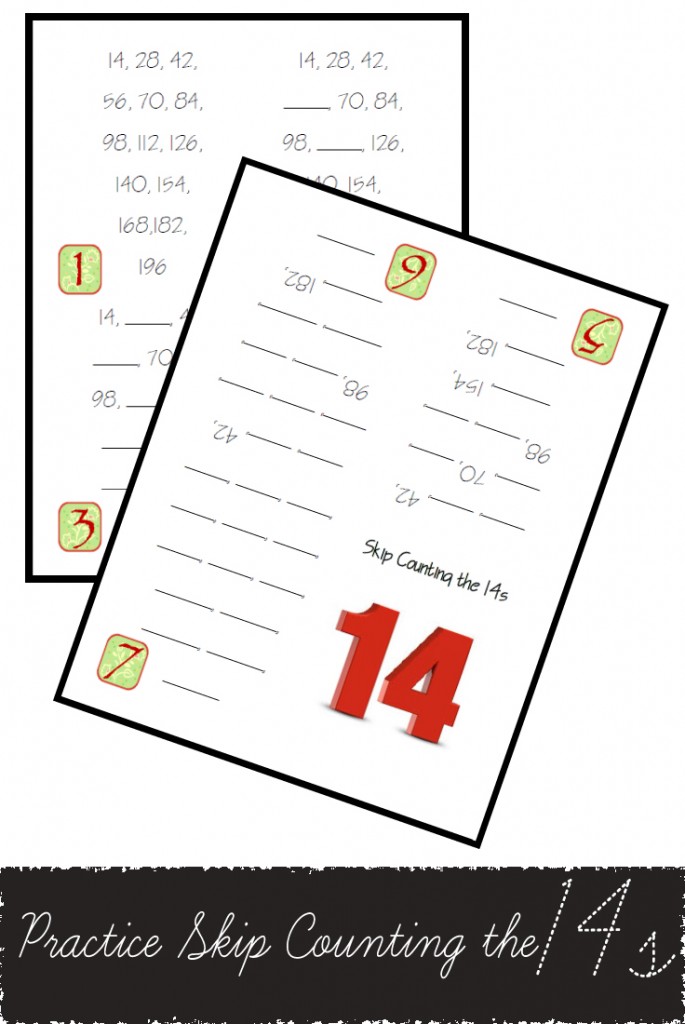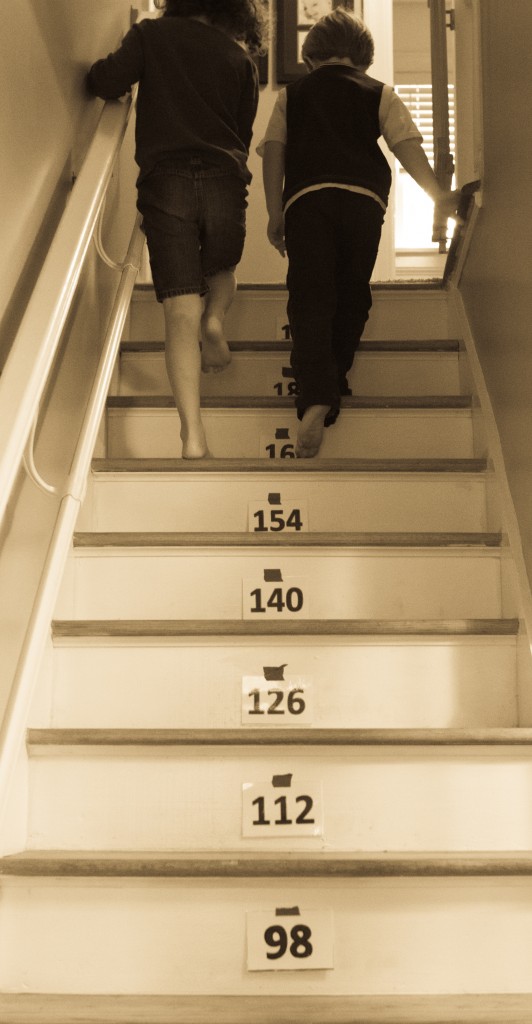
Classical Conversations Cycle 1 Week 8
Our Classical Conversation Cycle 1 year is well underway! We’ve had Fall Break and are now back at it. I keep telling folks that our past experience is that we can have a great routine going right up until Fall Break and then after that we’re all out of sorts until February. I’m working diligently to prove that past experience is NOT a prediction of future performance by getting back in the groove before November. Wish me luck.
Math
 A couple of years ago, I created a little skip counting “booklet” that I used in class. You are welcome to download it by clicking on the image to the right. The idea is that the child works their way from the “1” block, which has the most information to the “7” block, which they must complete from memory. After completing 1-4 on the back side of the sheet, fold the sheet to make a booklet.
A couple of years ago, I created a little skip counting “booklet” that I used in class. You are welcome to download it by clicking on the image to the right. The idea is that the child works their way from the “1” block, which has the most information to the “7” block, which they must complete from memory. After completing 1-4 on the back side of the sheet, fold the sheet to make a booklet.

This also means that the child has been able to see plenty of “hints” as they go, but by the time they flip the booklet over to complete the “7” block, they’re really just going entirely from memory. 7 is also the number of times that CC recommends you repeat information in order to store it in your child’s short-term memory, so this works out well in that regard, too!
We’ll also be adding the 14s to our stairs at home. This has worked very well for us in years past. If you’re already a compulsive stair-counter (surely I’m not the only one!), this is a great way to use that particular OCD quality to your advantage. My son, in particular, loves it when we do this with the 14s. He even tries to skip count backwards on his way down!
English
Hands down, the most effective thing for memorizing the prepositions in my house this year has been printing out a list of them and taping them to the wall. We watch the talented CC family that put this CC Prepositions video together and attempt (key word: “attempt”) to do the motions with them. Be assured, we look exactly nothing like these three in the video, except for there being a mom, older daughter, and younger son in our house, too. Really, just for kicks, our family should do a video and put it right beside this one. It would be like our own personal pinterest-type “Fail” . . . and you’d all get your belly laugh in for the week.
Once we’ve perfected botched the choreography sufficiently (two or three times), we move over to our list on the wall and do the song from memory while looking at the words. This has really helped my kiddos distinguish between a few that they naturally want to run together (“Of, Off” for example). Choreography at this point is, thankfully, optional. We can ALL successfully do the “without” move to wrap up the song, which makes us all feel cool enough.
Anyway, this has been super simple and both my kiddos can now whiz through their prepositions like nobody’s business.
You all have probably already seen both of these books, but we enjoyed them our last time through this cycle to expand our understanding of prepositions.
Science Grammar
Very interesting (and quick!) video about Monocots vs. Dicots below. It briefly discusses plant evolution at the end of the video (starting at 2:24). It’s actually the only really boring part of the video, so don’t worry if you want to just stop it there, you won’t miss much.
History
We’ve really been enjoying the Kid’s Animated History with Pipo on Ancient History with Pipo on Hulu this year. There are videos that match many weeks of our history grammar and so far, I’ve found them to contain a ton of appropriate, useful information and it’s presented in a way that my kids have found entertaining. Each video is about 11 minutes long. There are two on India that compliment CC Cycle 1 Week 8 very nicely.
Tin Whistle (Music Theory)
Here is an adorable video that is an ode to the treble clef:
The group that did the video above has put out a whole series of videos that are wonderful tie-ins with our Tin Whistle study. If you want to see more of them, they’re pinned on my Pinterest Board for Tin Whistle.
There are also a couple of apps that are handy to reinforce the names of the notes:
One is called Note Brainer. It’s free. Free is good.
https://itunes.apple.com/us/app/notebrainer/id310695461?mt=8
This is a cute game called “Note Squish.” Think “Whackamole” for music theory.
https://itunes.apple.com/us/app/note-squish/id381536270?mt=8
Another one is called Piano Monkey. We’ve had it for a year or so because our piano teacher recommended it. It’s a pretty basic app, but it is great for teaching note recognition on the staff and on the piano.
https://itunes.apple.com/us/app/piano-monkey/id357407584
I always love hearing what other CC families are up to! Feel free to leave a comment below. I read every one of them!
A little background: This is our family’s sixth year to participate in a Classical Conversations (CC) community. We participate in the Foundations portion of the program, which is designed for children ages 4 to about 11 and the Essentials portion of the program, which is designed for children in grades 4-6. Both programs lasts for 24 weeks each year. In Foundations each week the children cover 7 different grammar subjects (Timeline, History, Math, Science, English, Latin, and Geography), do a short (2-3 minutes) presentation, participate in one or more Science experiments and cover some area of Fine Arts. It’s a VERY busy (and fun!) morning! In the afternoons, the Essentials program spends about 45 minutes on English grammar, 30 minutes on mental math, and 45 minutes on writing. It’s a VERY busy (and fun!) afternoon!




